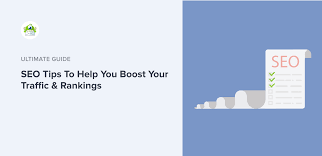
Expert Tips to Create a Blog That Attracts Readers and Ranks High in 2025
In 2025, blogging remains a powerful way to share knowledge, express creativity, and even earn a living. However, creating a blog that not only attracts readers but also ranks high on search engines is a strategic endeavor. If you’re looking to stand out in the crowded digital space, this guide will provide expert tips to help you build a blog that combines great content with high SEO rankings, ensuring your audience grows over time.
1. Focus on High-Quality, Engaging Content
The foundation of any successful blog is high-quality content. In 2025, content that is informative, well-written, and engaging will naturally attract readers and help improve your SEO ranking.
Content Creation Tips:
-
Solve Problems: Address real problems that your audience faces. Whether it’s how-to guides, tutorials, or solutions to common issues, providing value will keep readers coming back.
-
Be Original: Offer a unique perspective or angle. Avoid regurgitating what others have said; instead, create original content that adds new insights.
-
Use Visuals: Incorporate high-quality images, infographics, and videos to break up the text and make your posts visually appealing. This increases user engagement and time spent on your site.
Why It’s Important:
-
User Engagement: Engaging, valuable content encourages visitors to spend more time on your site, reducing bounce rates and improving SEO.
-
Reader Retention: High-quality content builds trust and loyalty, ensuring your readers return for more.
2. Master Keyword Research and SEO
Effective SEO is critical for driving organic traffic to your blog. In 2025, SEO has evolved to focus on user intent and content relevance, meaning that it’s no longer just about inserting keywords but about offering value with those keywords.
SEO and Keyword Tips:
-
Conduct Thorough Keyword Research: Use tools like Google Keyword Planner, Ahrefs, or Ubersuggest to find keywords with high search volume and low competition.
-
Use Long-Tail Keywords: Long-tail keywords (phrases with three or more words) are less competitive and can help you rank higher in niche areas.
-
Optimize On-Page SEO: Include your primary keyword in the title, meta description, headers, and throughout the content. But avoid keyword stuffing—maintain a natural flow.
-
Focus on User Intent: In 2025, Google’s algorithms prioritize understanding user intent, so your content should provide comprehensive answers to questions users are asking.
Why It’s Important:
-
Better Rankings: Optimizing for SEO helps search engines understand and rank your content better.
-
Increased Traffic: Ranking higher for relevant keywords drives more organic traffic to your blog.
3. Design Your Blog for User Experience (UX)
User experience (UX) plays a pivotal role in attracting and retaining readers. In 2025, websites that are easy to navigate, fast, and mobile-friendly offer a better user experience, which in turn enhances SEO.
UX Design Tips:
-
Mobile Optimization: With more people browsing on smartphones, ensure your blog is responsive and mobile-friendly. Use Google’s Mobile-Friendly Test to check your site’s performance.
-
Fast Loading Speeds: Google’s Core Web Vitals emphasize speed as a ranking factor. Compress images and use a Content Delivery Network (CDN) to speed up your blog’s load times.
-
Clear Navigation: Create a simple and intuitive navigation structure. Use categories and tags to help visitors find related posts easily.
-
Readable Fonts and Layout: Use easy-to-read fonts (such as Arial or Helvetica) and ensure your text is well-spaced. Avoid overwhelming your readers with cluttered, hard-to-read text.
Why It’s Important:
-
Reduced Bounce Rate: An easy-to-navigate, fast website keeps users engaged, encouraging them to explore more content.
-
Improved SEO: Positive user experiences, such as low bounce rates and long session durations, contribute to higher rankings on search engines.
4. Leverage Internal and External Linking
Linking is a powerful SEO strategy that can increase the visibility of your blog posts. Both internal and external links help establish authority, improve site structure, and provide additional value to your readers.
Linking Tips:
-
Internal Linking: Link to other relevant posts within your blog to keep users engaged and improve SEO. This also helps search engines crawl your site better.
-
External Linking: Link to authoritative external sources (such as studies or well-respected blogs) to enhance your post’s credibility and provide more value to readers.
-
Use Descriptive Anchor Text: Make sure your anchor text (the clickable text in a hyperlink) is descriptive and relevant to the content it links to.
Why It’s Important:
-
Improved Site Structure: Internal links help search engines index your blog more efficiently and boost your SEO rankings.
-
Credibility: External links to authoritative websites boost your blog’s trustworthiness, which is favored by Google.
5. Create Content for Featured Snippets
In 2025, featured snippets—the boxed information that appears at the top of Google’s search results—are an excellent way to attract more visibility to your blog. Aiming to rank in these positions can significantly increase your traffic.
Tips for Targeting Featured Snippets:
-
Answer Common Questions: Structure your blog posts in a way that answers specific, commonly searched questions. Use concise, clear answers at the beginning of your content.
-
Use Lists and Tables: Google often pulls information from bullet points or numbered lists to feature in snippets. Present information in an easily scannable format.
-
Optimize for “People Also Ask”: Include answers to common questions found in the “People Also Ask” section on Google to increase the likelihood of your content appearing in snippets.
Why It’s Important:
-
Higher Visibility: Featured snippets can drive a large amount of organic traffic by positioning your content at the top of search results.
-
Increased CTR: Being featured in a snippet increases your Click-Through Rate (CTR) and drives more traffic to your blog.
6. Build a Strong Social Media Presence
Promoting your blog through social media is essential for attracting readers and building a community. In 2025, an active social media presence can help you drive traffic, enhance brand recognition, and foster engagement.
Social Media Tips:
-
Share Your Posts Consistently: Post your blog content regularly on platforms like Facebook, Instagram, LinkedIn, and Pinterest to reach a broader audience.
-
Engage with Your Followers: Respond to comments, participate in conversations, and engage with followers on social media to build relationships and keep your audience engaged.
-
Use Hashtags: Utilize trending and niche-specific hashtags to increase your reach on platforms like Instagram and Twitter.
Why It’s Important:
-
Increased Traffic: Promoting your blog on social media drives more traffic and exposure to your posts.
-
Community Building: Engaging with followers helps create a loyal audience that shares your content and supports your blog.
7. Regularly Update and Repurpose Content
To maintain relevance and continue to rank well in 2025, it’s essential to update and repurpose old blog posts. This ensures your content stays fresh, accurate, and aligned with current trends.
Content Update Tips:
-
Refresh Old Posts: Update outdated information, add new data, and optimize for new keywords to keep older posts relevant.
-
Repurpose Content: Turn high-performing blog posts into videos, infographics, or podcasts. This helps reach different audiences and provides more ways for people to engage with your content.
Why It’s Important:
-
SEO Benefits: Updating content signals to search engines that your blog is active and providing up-to-date information, helping maintain or improve your rankings.
-
Increased Engagement: Repurposing content allows you to reach different audiences and keep your blog’s content diverse.
Conclusion: Build a Blog That Attracts Readers and Ranks High
Creating a blog that attracts readers and ranks high on search engines in 2025 requires a strategic approach that blends high-quality content, effective SEO, and strong engagement with your audience. By focusing on key areas such as keyword research, content optimization, user experience, and leveraging social media, you can build a blog that not only resonates with readers but also performs well in search rankings. Follow these expert tips, and you’ll be well on your way to creating a blog that stands out and achieves long-term success.



